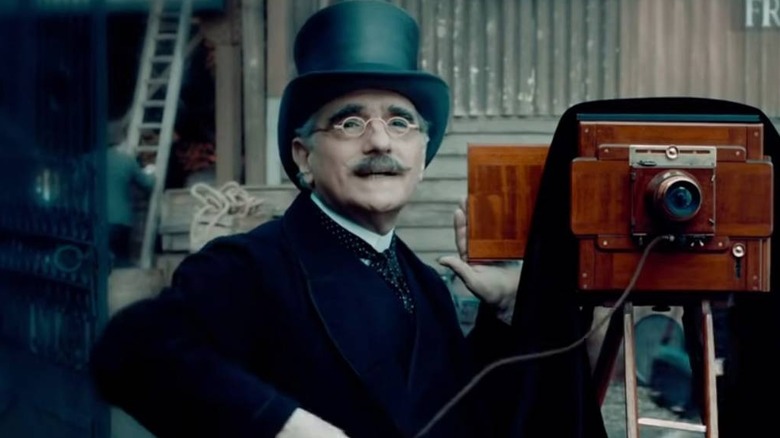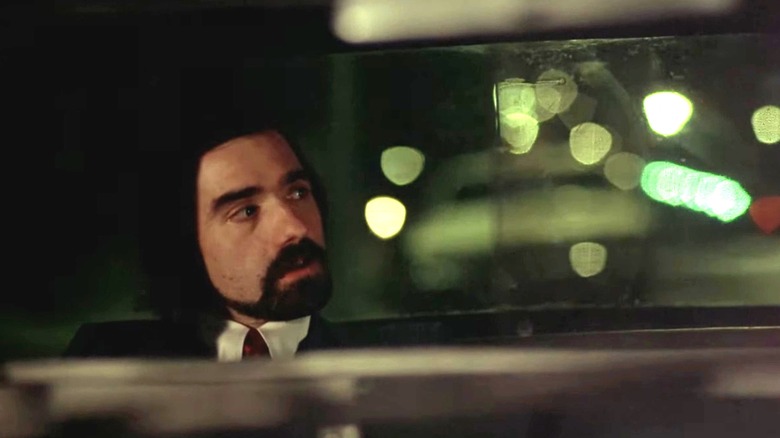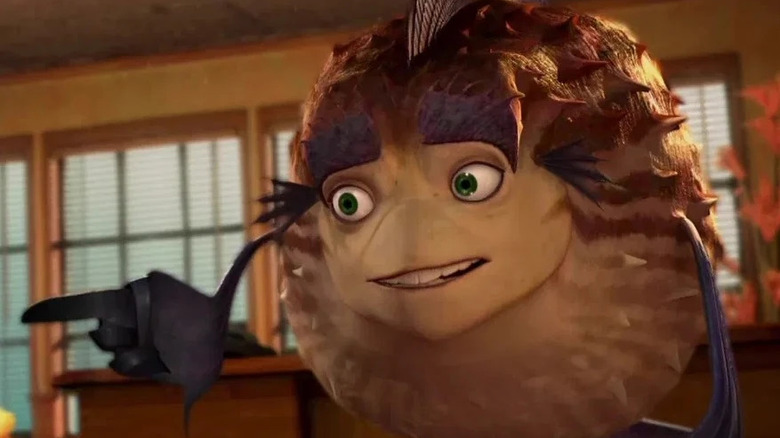Every Time Martin Scorsese Has Cameoed In One Of His Movies
Contains spoilers for "Killers of the Flower Moon"
It's a time-honored tradition for directors to have brief cameos in their films. Alfred Hitchcock was famous for appearing in brief roles where he was simply someone in the background who didn't speak. Then there are filmmakers like Quentin Tarantino, who usually give themselves a few lines of dialogue as an actual character. And then there's Martin Scorsese.
He usually adheres to the Hitchcock method of cameos in his own movies, typically subtle, but he changes it up for his most recent endeavor — "Killers of the Flower Moon." Martin Scorsese has a brief cameo at the very end of "Killers of the Flower Moon" during the radio broadcast retelling of what happened to the key players of the Osage Nation murders, namely, Ernest Burkhart (Leonardo DiCaprio), William King Hale (Robert De Niro), and Mollie Burkhart (Lily Gladstone). Scorsese appears at the tail end of the show to read off what happened with Mollie and how she died much sooner than Ernest and King.
It's not stunt casting. Scorsese's presence pulls viewers back to reality, almost as if to remind them this all really happened, and it gives Mollie's final moment the dignity it deserves. It follows an intriguing trend of Scorsese cameos that aren't big, like playing a diner patron in "Alice Doesn't Live Here Anymore" or a brothel client in "Boxcar Bertha," but are often crucial to the story. As such, it's fun to go back and see where his acting resume began.
Martin Scorsese's cameos have changed in tone throughout his career
Martin Scorsese's cameos go back to his directorial debut — 1967's "Who's That Knocking at My Door." This one is easy to miss, which is commonplace for these early appearances. Mostly, he would play characters directly involved in the lives of the often violent characters portrayed in his films. For example, 1973's "Mean Streets" sees him as a man at the film's conclusion who shoots into the lead characters' car. The same can be said for his role as a taxi cab passenger in "Taxi Driver," where he asks the driver to stop so he can spy on his cheating wife and discusses how he's going to shoot her. Travis Bickle (Robert De Niro) remains quiet, almost as though the passenger is giving a voice to his own violent urges.
But a change in the Scorsese cameo happens with 1980's "Raging Bull." He plays a stage manager, and it represents a shift toward Scorsese playing more media figures or individuals associated with an art form, almost like him recognizing his place as an influential director. He plays a TV director in "The King of Comedy," a spotlight operator in "After Hours," a photographer in "The Age of Innocence," a projectionist in "The Aviator," and another photographer in "Hugo." This trend continues into "Killers of the Flower Moon," where he's a radio show producer. In this way, he's asserting his dominance as a storyteller and someone who guides the characters and audience toward where they need to go next.
This doesn't encapsulate every single cameo from Scorsese's modern era. He plays an aristocrat in "Gangs of New York" and a Dutch trader in "Silence." Scorsese cameos may not be the flashiest, but they say something profound about the characters or story.
Martin Scorsese has acted in other people's projects, too
Martin Scorsese doesn't exactly show off the most astounding range with cameos in his movies, but it's enough to get him parts in other people's TV shows and films. Mostly, these other roles take advantage of Scorsese's celebrity. For instance, he plays movie director Joe Lesser in 1991's "Guilty by Suspicion." It's a fictional character, but casting Scorsese as a filmmaker lends him some credence in a bit of stunt casting.
Scorsese movies aren't necessarily known for their humor, but it's clear the filmmaker doesn't mind poking fun at himself. He's played himself in an array of lighter projects, such as "Curb Your Enthusiasm," "Entourage," and "30 Rock." The joke is almost always that Scorsese is this larger-than-life figure in Hollywood. So when he appears in "Curb Your Enthusiasm" Season 3, Episode 6 — "The Special Section" — it's hilarious when Larry David gets frustrated with the director and asks him if he knows what he's doing.
Of course, there's Scorsese's utterly bizarre turn in the animated "Shake Tale," where he plays the pufferfish Sykes. Even though he's a fish, the role still encapsulates the audience's expectations of Scorsese, namely, being affiliated with the mob, since Sykes works with the mob boss great white shark, Don Lino, played by Scorsese's longtime collaborator Robert De Niro. From all this, it's clear a Scorsese cameo has transcended beyond being a mere Easter egg. These roles play into the director's reputation, and while they don't overpower the work at large, they're substantial all the same.


